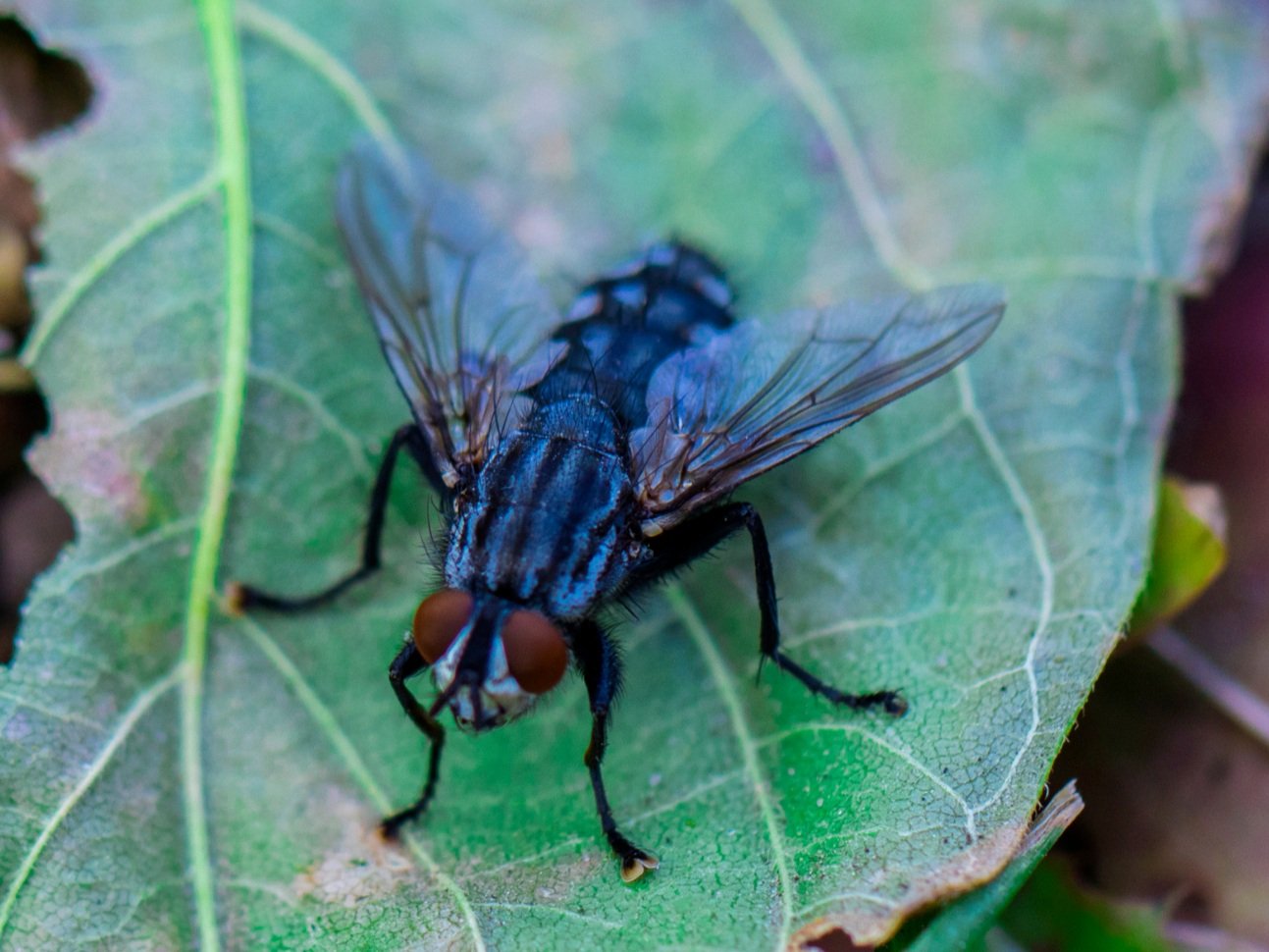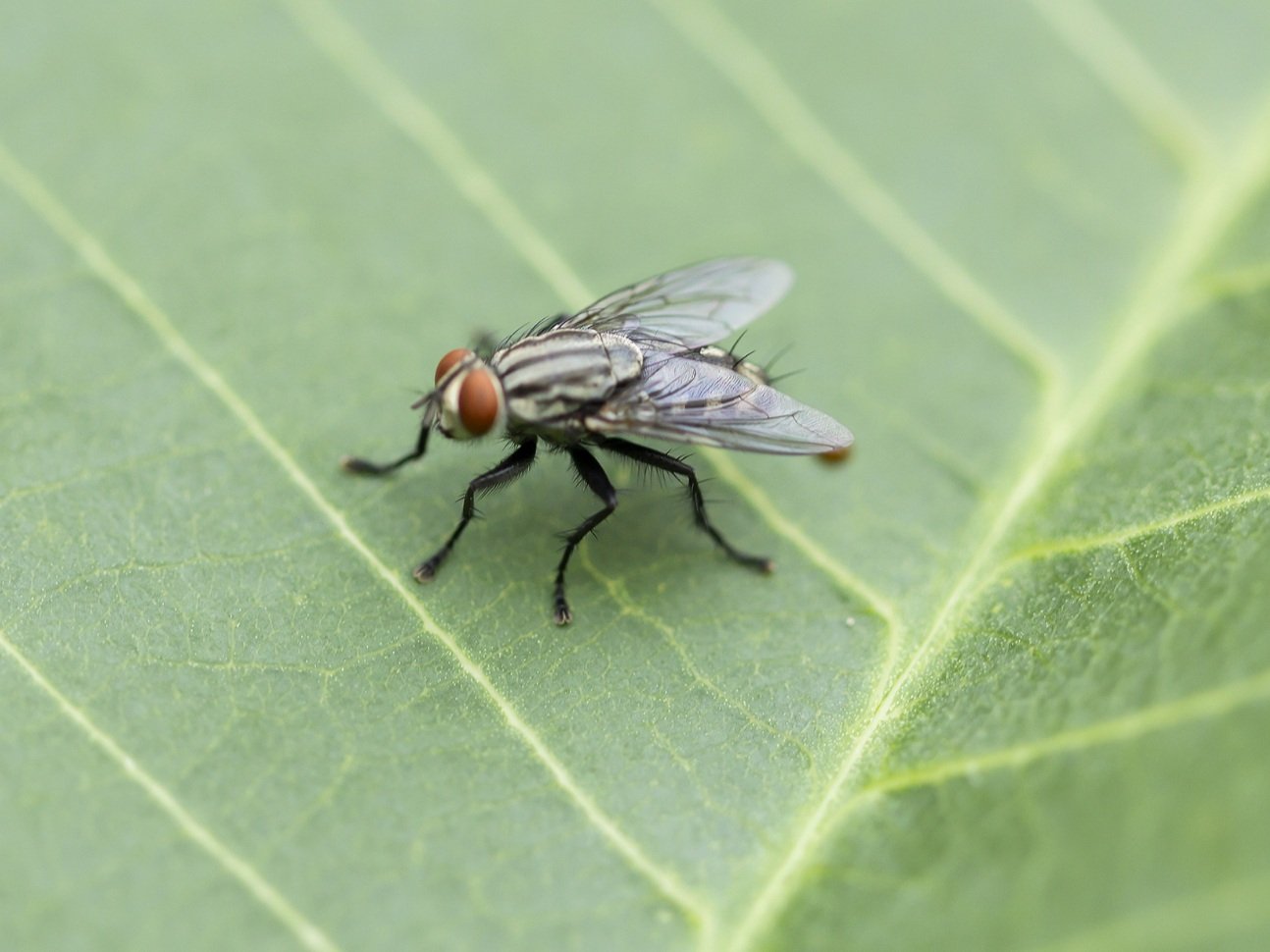Flies
Cluster Fly and House Fly
The cluster fly is one of the many species of insects that enter homes in late summer and early fall in search of protected areas in which to spend the winter. Cluster flies closely resemble the common house fly but differ in that they have a patch of yellow hairs under their wings. They normally enter homes and other structures by squeezing through cracks around windows and doors. Besides the obvious fact of them being a tremendous annoyance, cluster flies are in fact harmless; they do not feed or lay eggs during the winter months. The cluster fly maggot is an internal parasite of earthworms as opposed to the House Fly who can and will lay their eggs on nearly anything their maggots can feed on. Though there is no easy remedy for cluster fly problems, sealing exterior cracks and holes on the outside of the house, especially the south and west facing walls, can help to reduce the number of flies that find their way inside dramatically.
Drain Fly
Drain flies (also known as moth flies) sometimes appear suddenly and mysteriously, becoming a nuisance in homes where they appear. Drain fly larvae grow and feed in stagnant or polluted, shallow water or in extremely moist organic solids. The eggs, larvae and pupae can be found in the muck, slime or gelatinous film that often accumulates on the sides of drains and overflow pipes in homes or any sewage rich area. Adult drain flies are small (1/5 to 1/6 inch long), fuzzy, dark or grayish insects with the body and wings densely covered with hairs. They are poor fliers and make quick, irregular, hesitating flights covering only a few feet in short, uneven lines.



